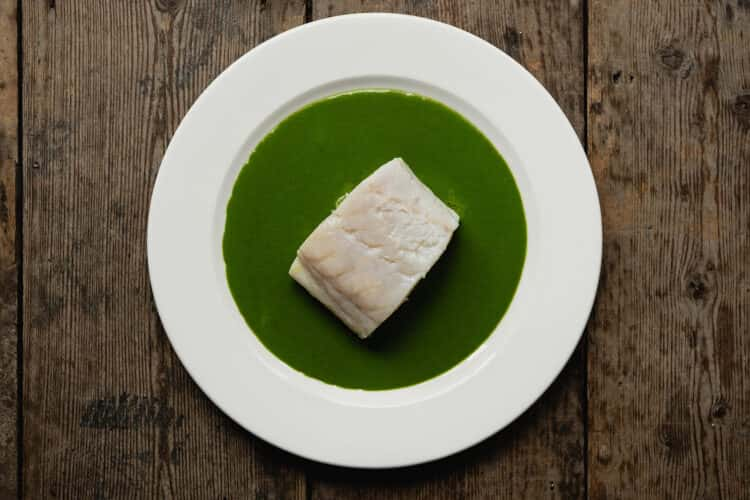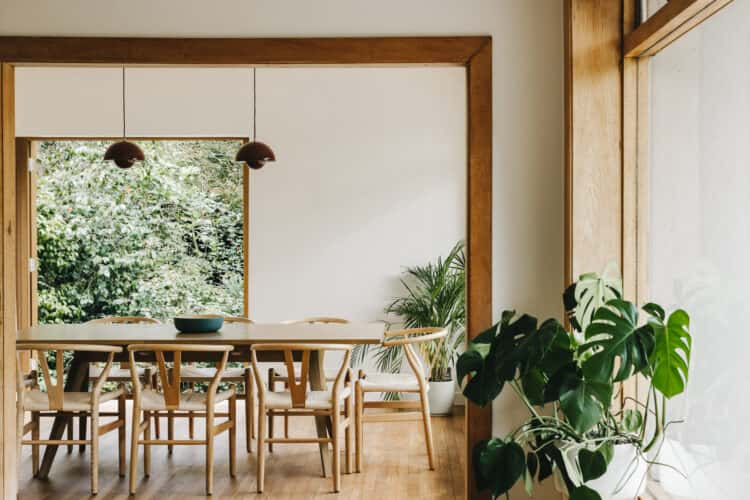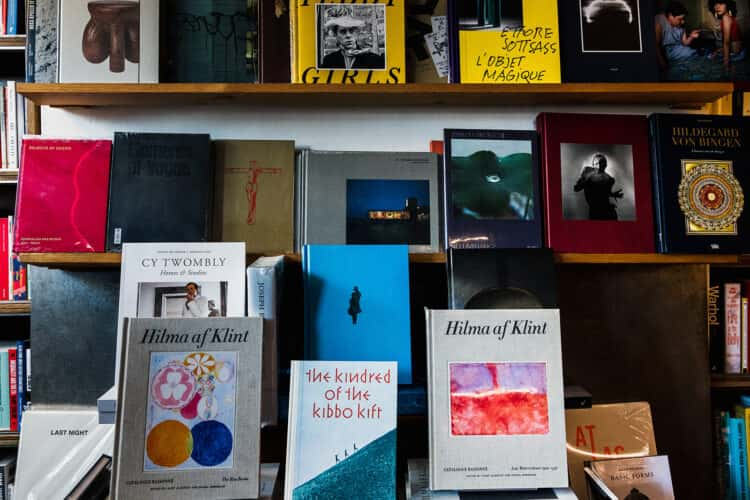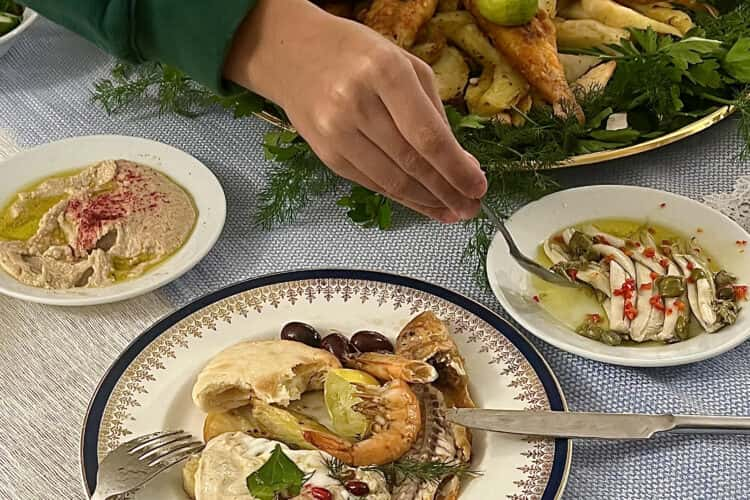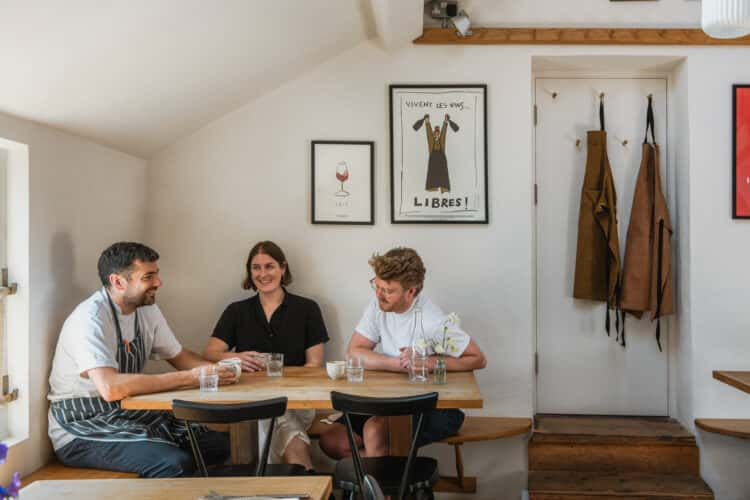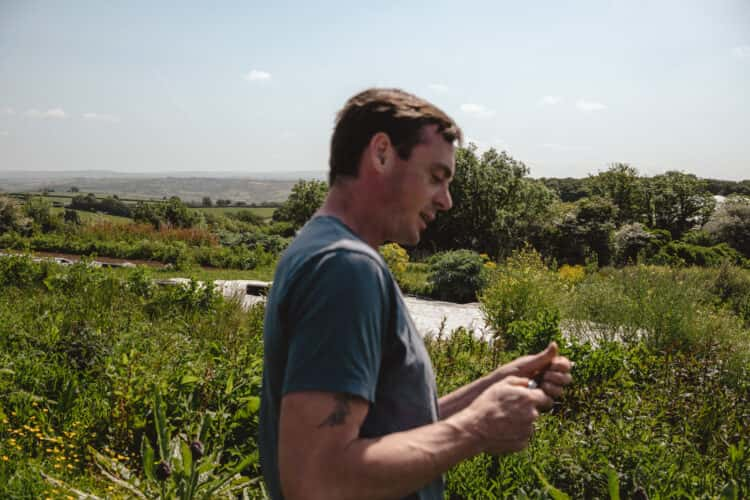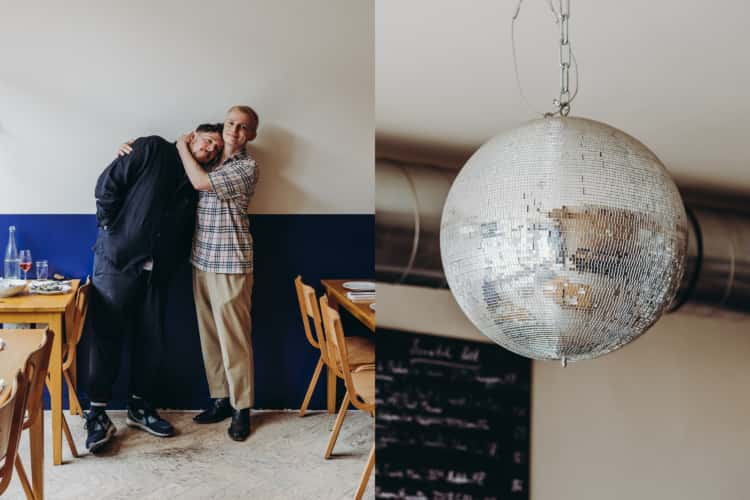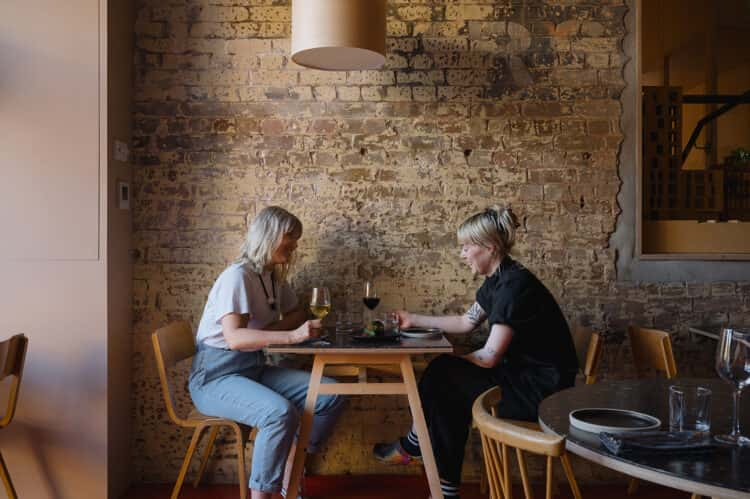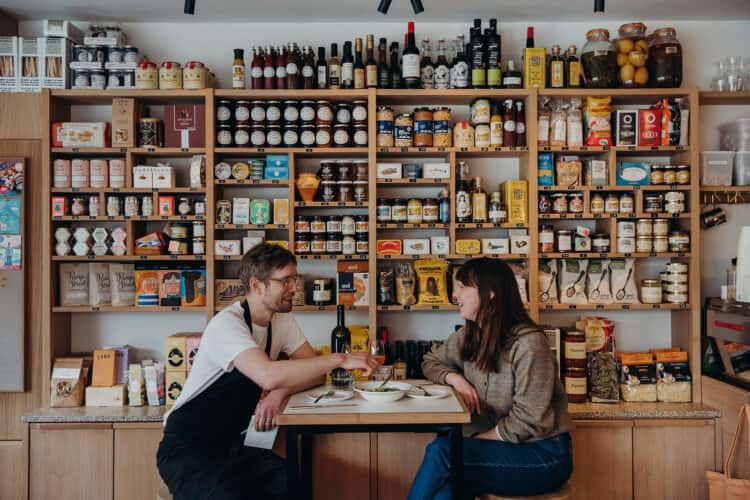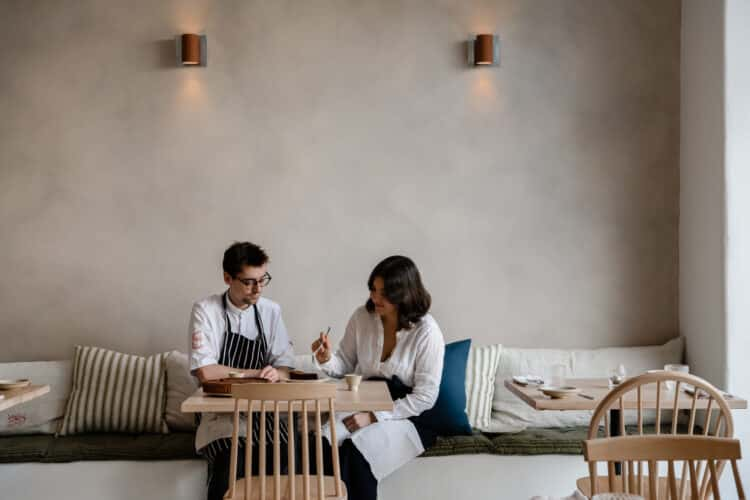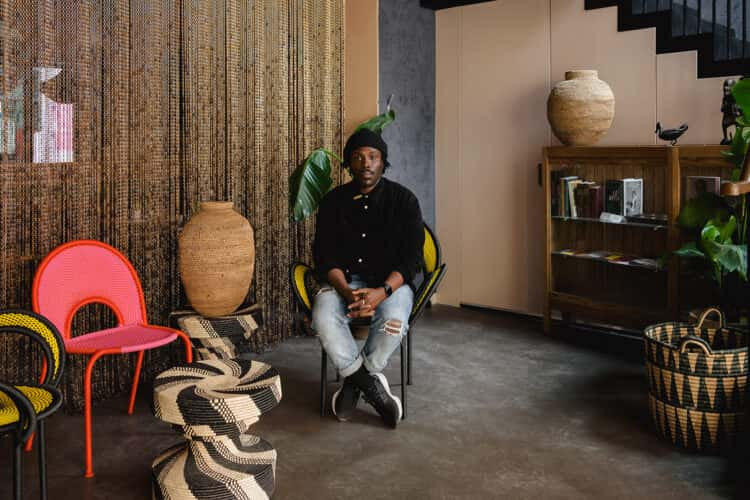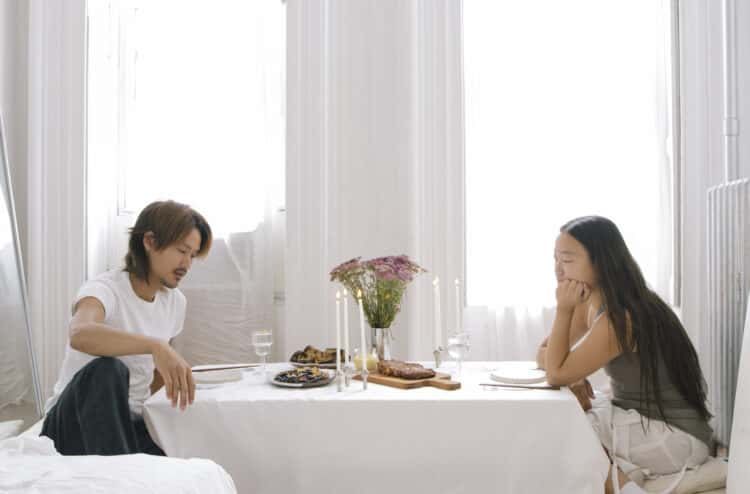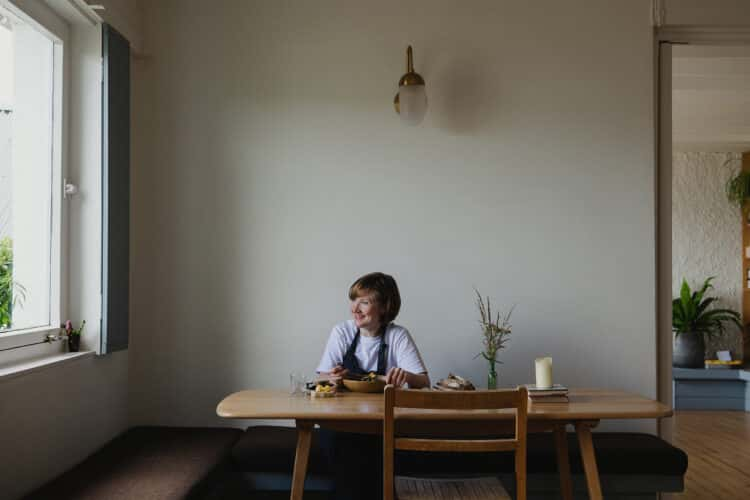How the decadent interiors of Sessions Arts Club in Clerkenwell, London, inspire Florence Knight’s deceptively simple menu
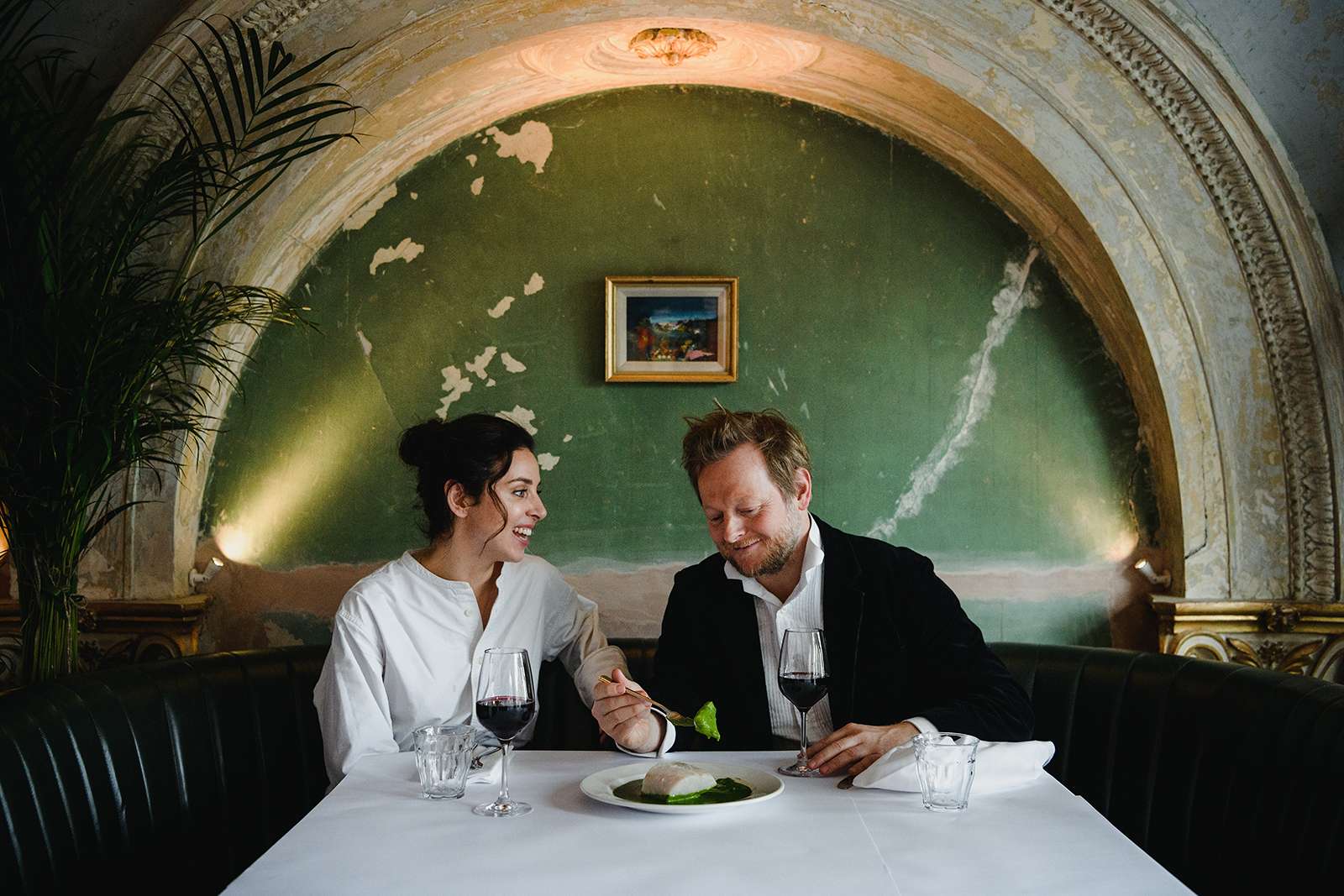
Words Billie Brand
Photography Elliot Sheppard
One might expect equally fantastical food from such a fantastical setting, but that’s not quite the case. It’s fantastic, yes, but certainly not fussy. Florence, formerly of Polpetto, who grew up on deliciously simple food such as scrambled eggs and macaroni cheese, decided to play with contrasts, creating a stripped-back menu that allows the flavours of the fresh seasonal produce to shine. The dish she cooks for us today – exquisitely poached hake served with watercress – is a case in point. As we sit down with Florence, she tells us of her early food memories cooking at her mother’s Aga, how art inspires her menu and why the kitchen is her happy place.
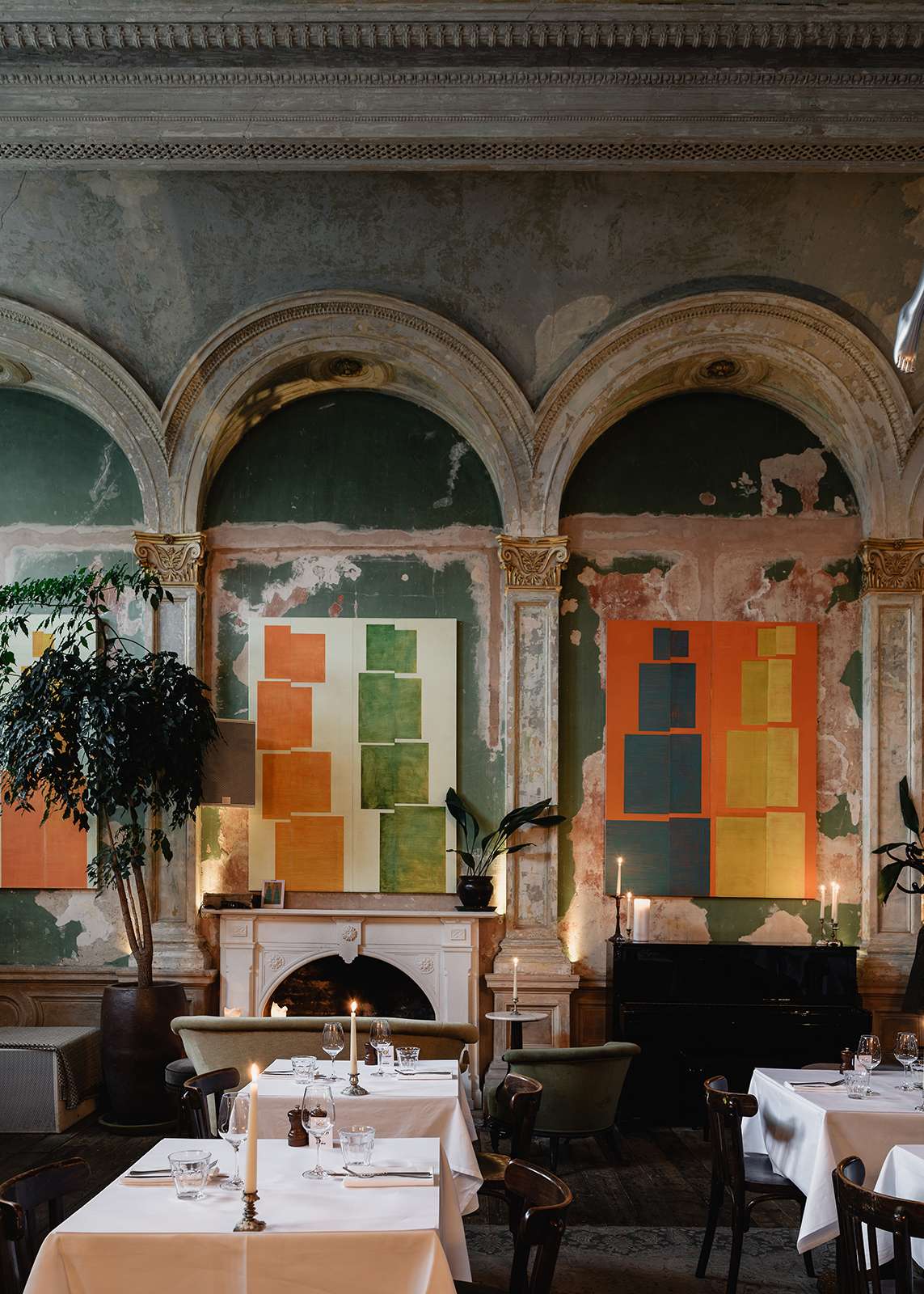
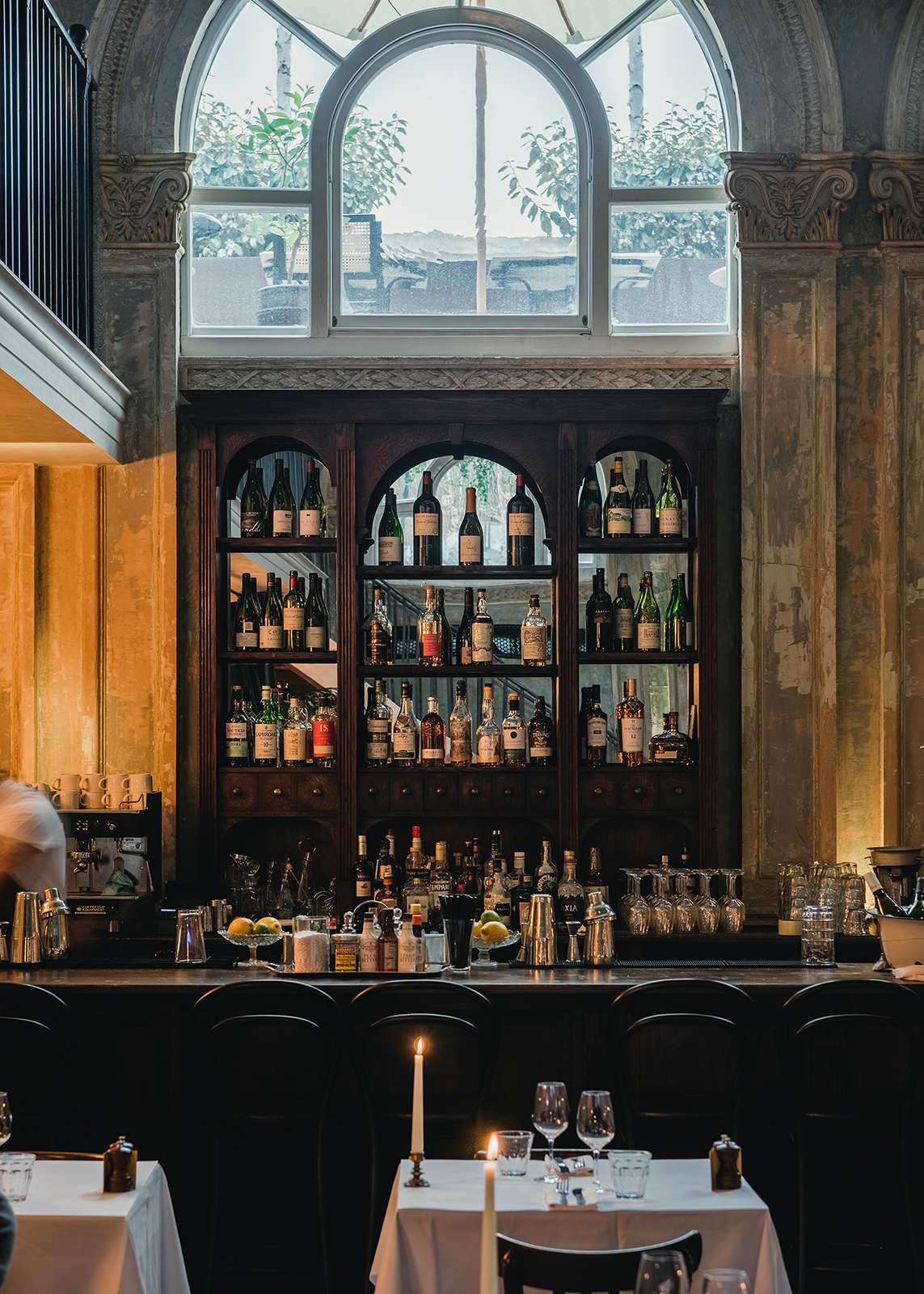
Florence: “Food has always been so central in my life. Our family house – the home that I grew up in – is an old dairy with quarry tiles and really thick walls. The kitchen table’s beaten up and wooden and there’s a wonderful old Aga we inherited. That house is all about the kitchen. Literally, everyone that walks in goes straight there. No one goes in the sitting room. Things like the Aga made it really easy to cook as a child because I always just put a chair up and would stir and help with dinner.
“My mum is really wonderful at celebrating things. Whether it was pancake day or our birthdays, food was always a big part of that. She would take us out picking blackberries and foraging for garlic. Now I’ve got my own children, I realise I do it as well. Even the apples for the sorbet here we found in Somerset. The children picked the nasturtium flowers from my friend’s garden when we had them on the menu.
“We never ate traditionally, so when I used to go to other people’s houses, I found dinner times quite unusual. At home, it was all about sharing. But there were so many of us to feed! I’m one of five – four girls and one boy. And now there are 14 grandchildren. Christmas is over the top! Everyone has dogs and we all go to my mum’s. It’s madness.
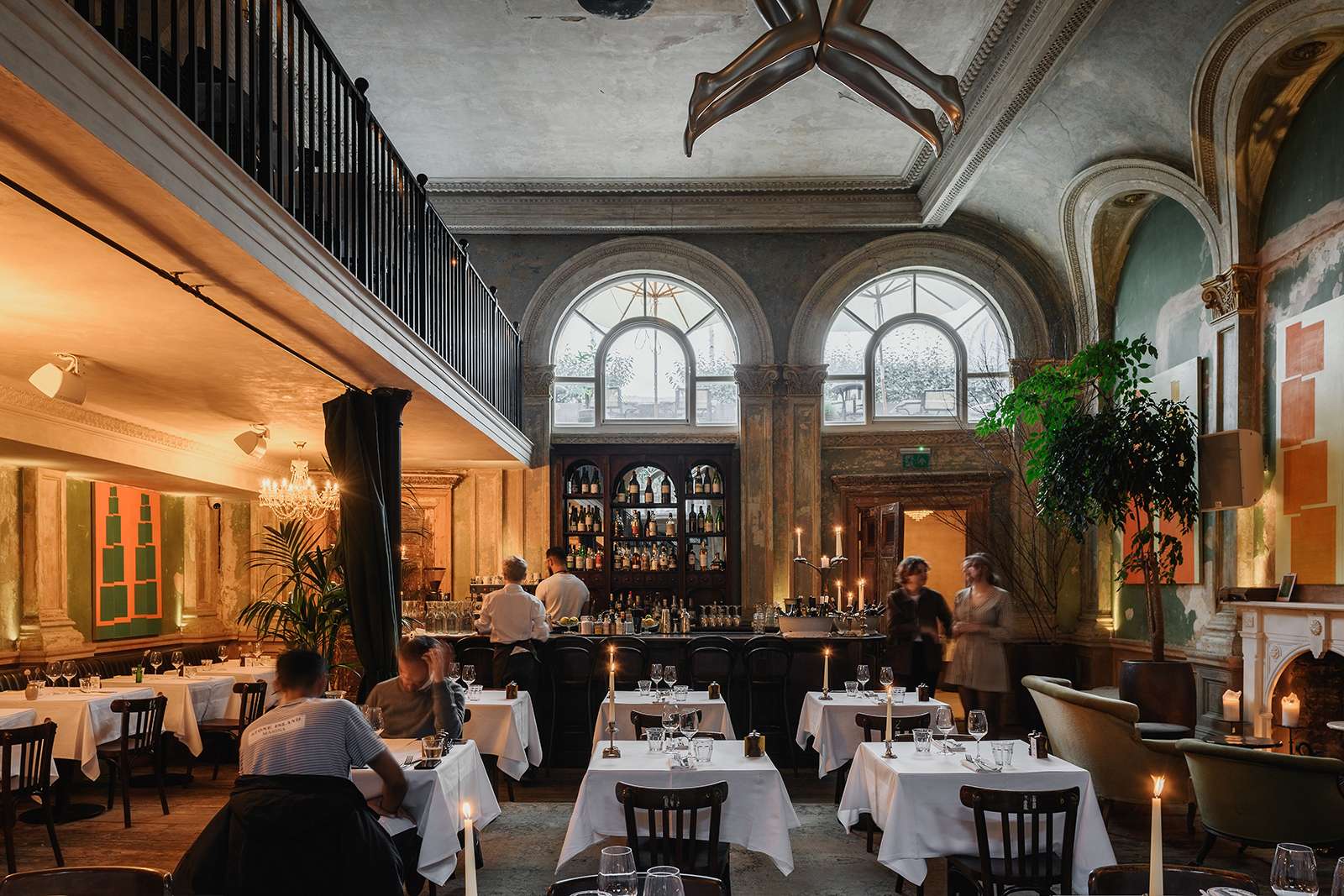
“We always had a big pot on the table, and you helped yourself. There might have been a big bowl of soup, and then hams and cheeses to pick from. I suppose it was more of a Mediterranean vibe. We never had a Sunday roast, and we never had food put on our plate. I think that really feeds into the way I feel about food – it’s about sharing and all being together. You get what you want and there’s no wastage.
“Food and art were always my passions. I did a foundation at the London College of Fashion and during that period I worked in kitchens to earn money. The environment in a restaurant is basically like a big family, which is what I’m used to. I grew up being quite bossy, looking after people and making food, so a kitchen didn’t feel intimidating to me.
“The fact that I learn really visually meant I was quite quick to pick things up. I loved watching people’s talents and skills. Even now, everyone in the kitchen brings a new skill and a new way of doing something. It’s little, tiny tricks like the way to peel garlic or the way to cook a fish. You never stop learning. There’s something really valuable about that.
“Johnny and I have been speaking for years. We were talking about projects and concepts, and how we could make them work. We naturally get on really well and we’ve both got the same eye for detail. When he found this site, I just walked in and was like, ‘I love it.’
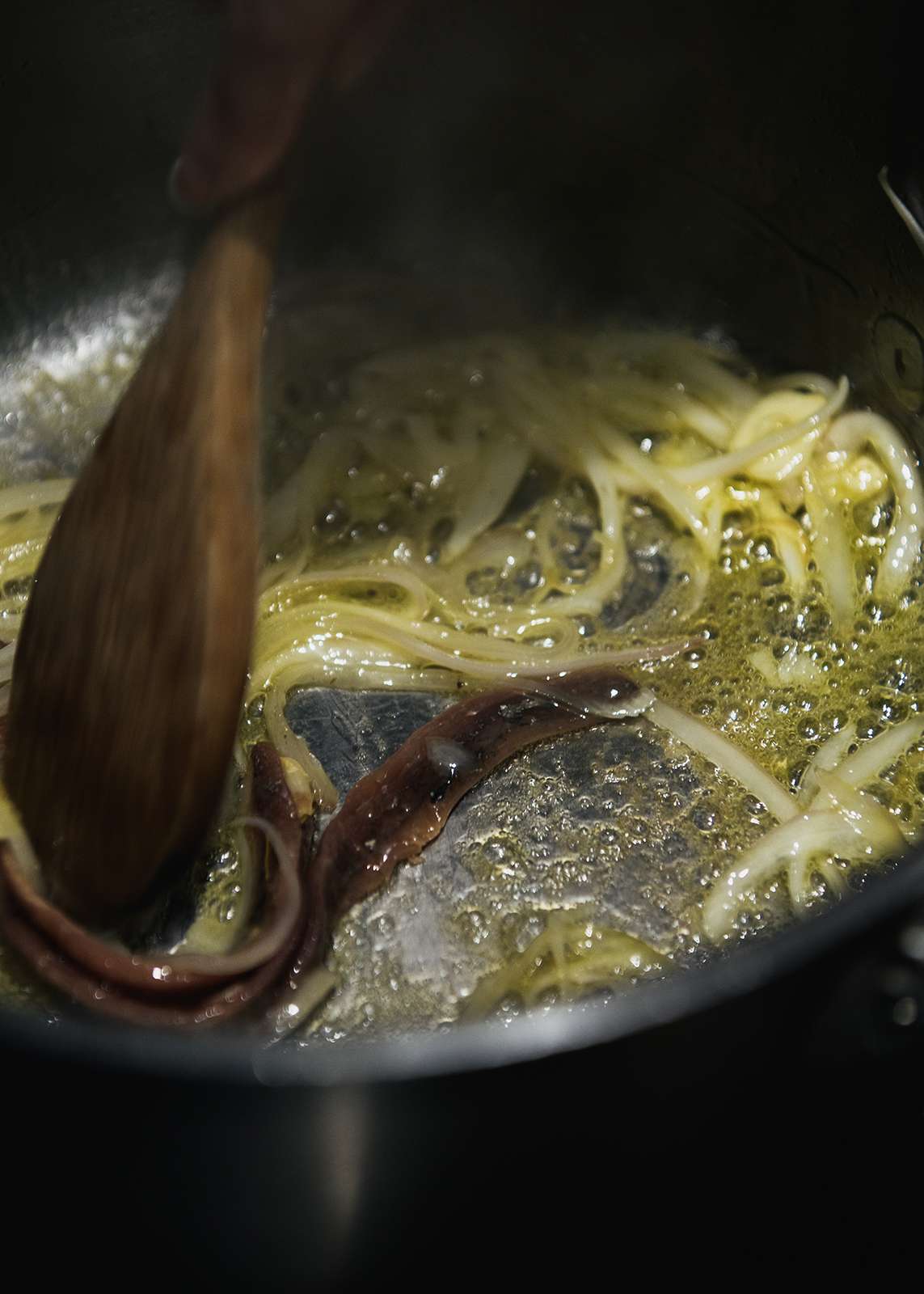
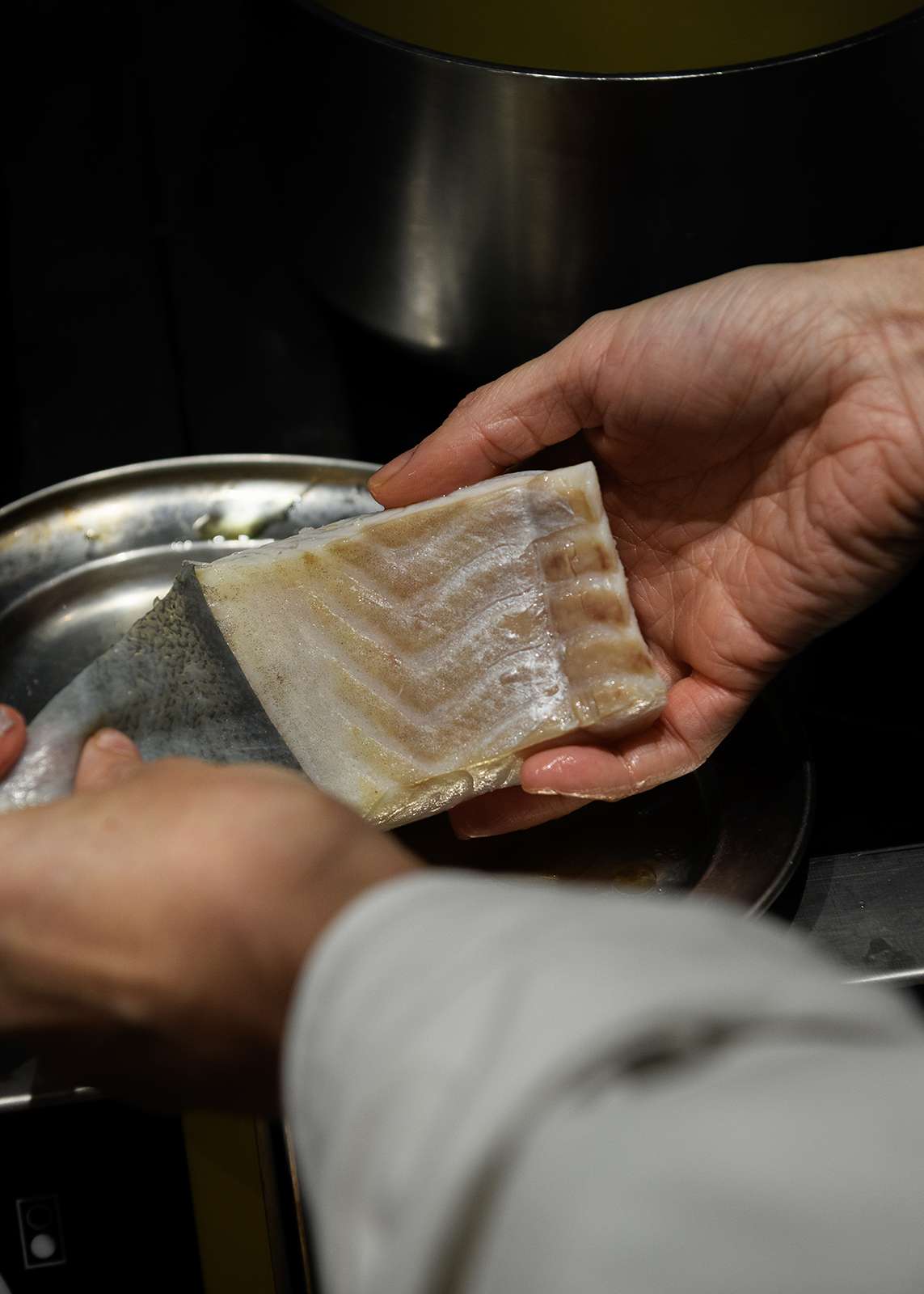
“I could instantly visualise what I wanted to do. You could walk in and think, ‘the food is going to be quite stuffy,’ but we wanted to have an element of cleanness to the food. There’s also a slight brutality to it. You’ve got this room that’s so feminine and I’m always looking for those juxtapositions between what’s going on with the plate and what’s going on with my surroundings. That was something we really wanted to play around with.
“We shift that along into the seasons, but now there are things that people just love. I don’t think we would ever take the chocolate tart off the menu now. I get bored really easily, but it’s become a classic.
“I love the space. The art changes with the seasons and when it does, it really changes the room. I think it’s exciting that we have the luxury of being able to create different moods and feelings within the rooms. It’s inspiring for me because I like to contrast the dishes to what’s going on.
“The building, although it’s beautiful, has many challenges. It’s not an easy site to work on. I didn’t get to design the kitchen – it was given to me. It’s tiny! It’s a really bijou space. It works but it’s quite challenging. You work hard for the beautiful building.”
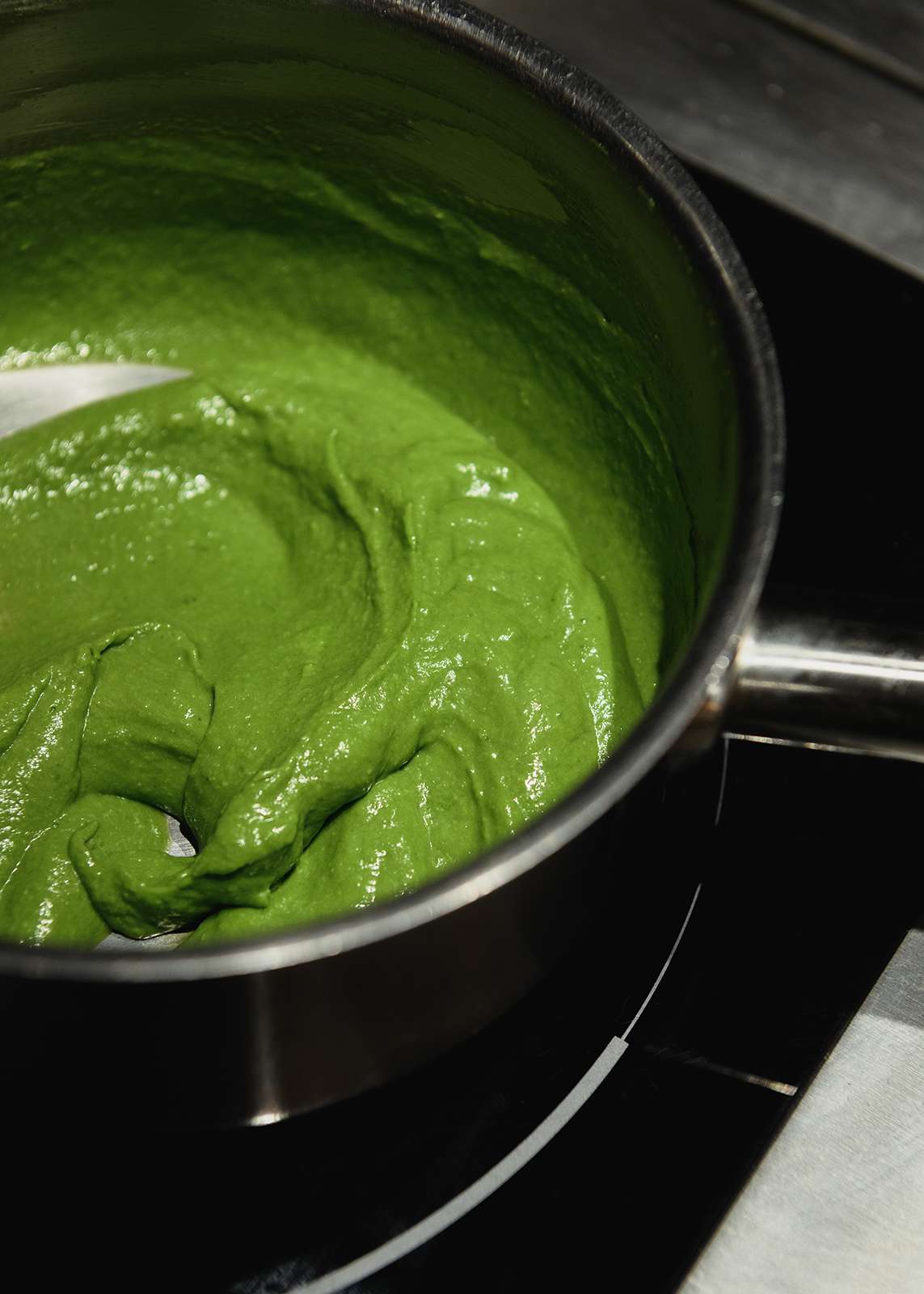
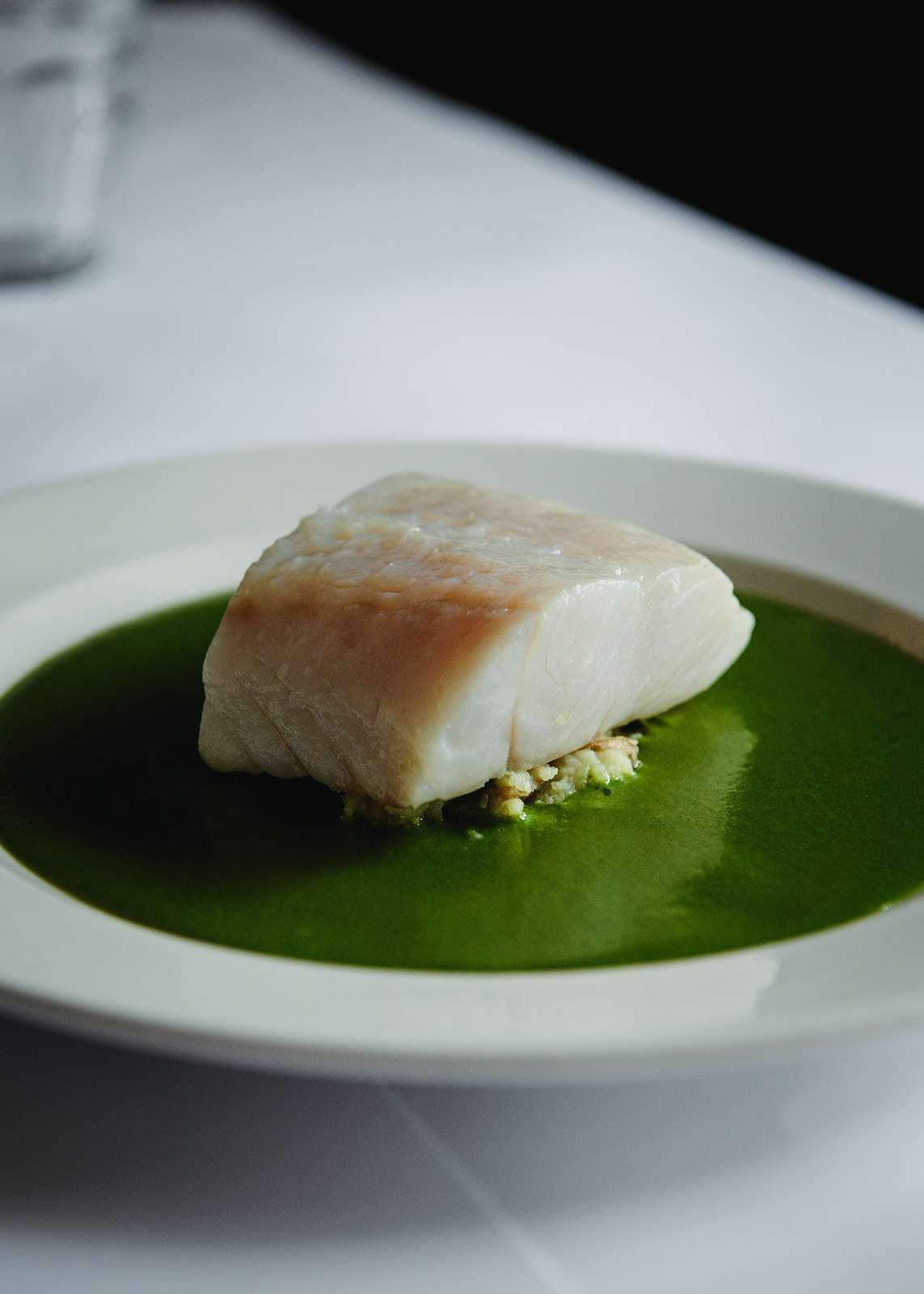
Florence’s recipe for hake and watercress
“This is a beautiful, clean dish. Simple food can be harder to cook because it leaves you more exposed and there’s nothing to hide behind but if you get everything right, and poach the fish to the perfect degree, it is really very special.”
100g unsalted butter
8 anchovy fillets
4 banana shallots, peeled and roughly chopped
2 garlic cloves, peeled and roughly chopped
5g salt
2l double cream
6 bunches watercress, washed and roughly chopped
1 large bunch flat-leaf parsley, washed and roughly chopped
500ml fish stock
Salt, to taste
1 large side hake, portioned into 4 x130g prime pieces
Melt the butter over medium heat in a large pot. Once the butter has melted, add the anchovies, then stir through the shallots, garlic and salt. Cover with a damp cartouche. Cook them over a low heat until soft with no colour for 10-15 minutes.
Pour over the double cream and reduce it by half. Add the watercress and parsley, then cook them for three minutes before removing the pot from the heat. Blitz in a blender until a smooth and bright verdant sauce forms. Pass it through a fine sieve into a container set over iced water.
Dissolve the salt in the fish stock over a low heat; adjust to your taste. Use a kitchen probe to check the temperature of the stock – it should be 85 degrees. Carefully lower an upside-down saucer into the hot liquor, then remove the pan from the heat. Lower the hake portions onto the saucer, making sure they are submerged. Cover the pot with a lid and remove it from the heat. Cook them for six to eight minutes depending on the thickness of the fish.
Carefully remove the hake from the stock onto a baking tray. Allow it to rest and continue to cook covered for three to four minutes. Meanwhile, heat the watercress sauce, stirring it over medium heat until it comes to the boil. Carefully turn the hake pieces over and peel away the skin. Pour the sauce over the base of the plate and top with the hake.
